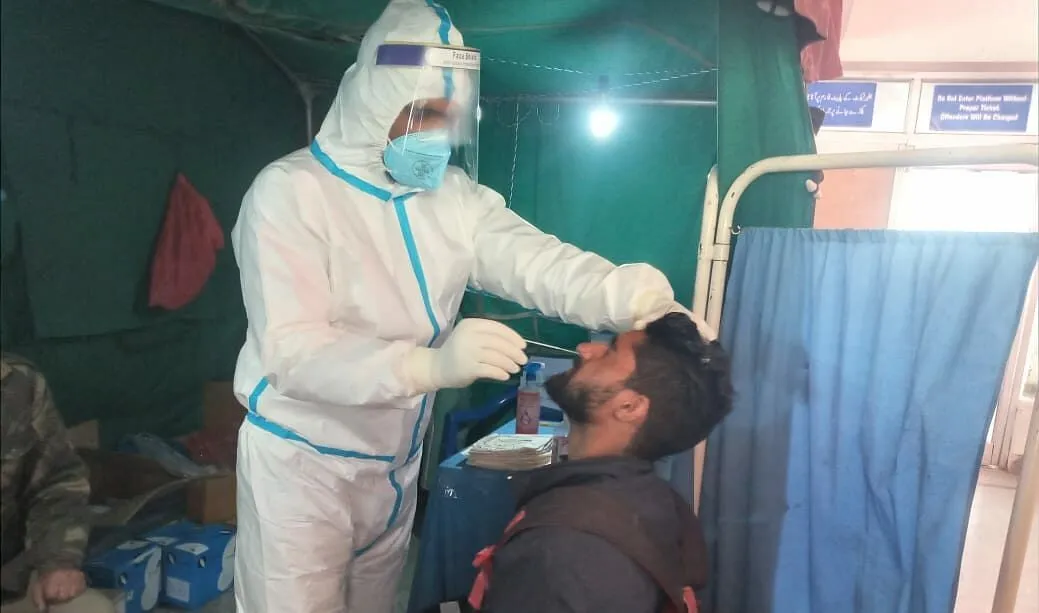Srinagar, June 9: While the COVID19 cases have nosedived in J&K, the positive percentage of samples tested is still high in five districts, a trend necessitating further testing and isolation. The overall positive percentage among the tested samples in J&K is less than 3 percent currently, as per information released by J&K Government’s media bulletin on COVID19. During the entire period of the pandemic, 3 out of every 100 people tested, were found positive, the data states. However, the district-wise break-up of samples tested and cases reported reveals that Kupwara and Srinagar in Kashmir division have disproportionately high positive percentage.
According to data of Union Ministry of Health and Family Welfare, sourced from J&K Government, in the week gone by, between 2 and 8 June, the positive percentage in district Kupwara has been the highest in J&K. In this remote district, 16.18 percent of the samples tested have been found positive. The district is closely followed by Srinagar, the worst affected district during both the waves of COVID19. In Srinagar, 14.44 percent samples have reported positive. The adjoining district of Budgam also has a very high positive percentage of 12.99.
In Jammu division, district Jammu has 12.93 percent samples testing positive while Reasi too is on the same level.
As on date, Kupwara, official data-wise has 1113 active cases while Srinagar, with a much higher population has 2826 active cases of COVID19. However, district Jammu has 3364 active cases, the highest in any district of J&K. District Doda has had the lowest positive percentage in J&K in the last week, standing at just over 1 percent. This district is followed by Baramulla and Kathua with a positive percentage of a little over 2. Poonch, Rajouri, Kishtwar, Shopian and Pulwama are also featuring in the low positive percentage category, with less than 5 percent of the samples tested from these districts positive.
However, Baramulla, Poonch and Doda, all the districts with low positive percentage have less than 20 percent of their samples tested using RT-PCR. In other words, around 80 percent of the samples have been tested using Rapid Antigen Test kits. RAT, as per experts, has a lesser sensitivity than RT-PCR and the chances of a false negative result are high.
In districts with high positive percentage, more RT-PCR tests have been done, In Kupwara, 87 percent samples have been tested on RT-PCR equipment. In Jammu district, 89 percent of samples were tested using RT-PCR. In Srinagar, this number stood at 58 percent.






